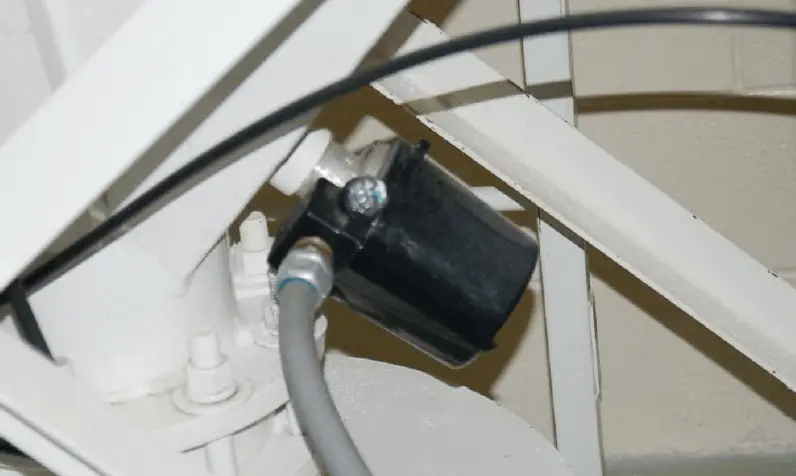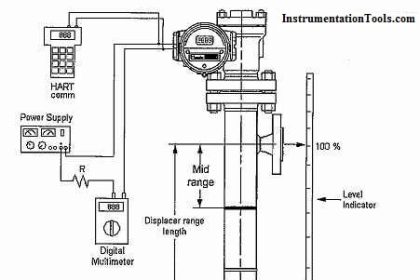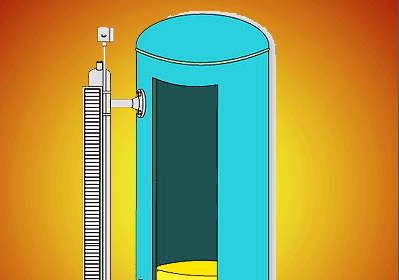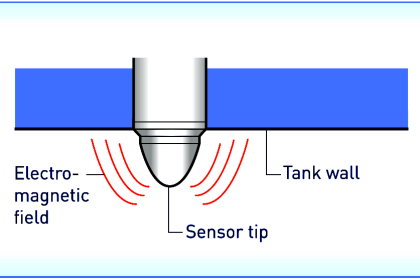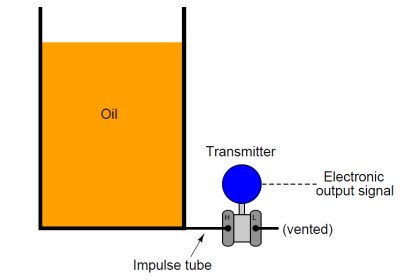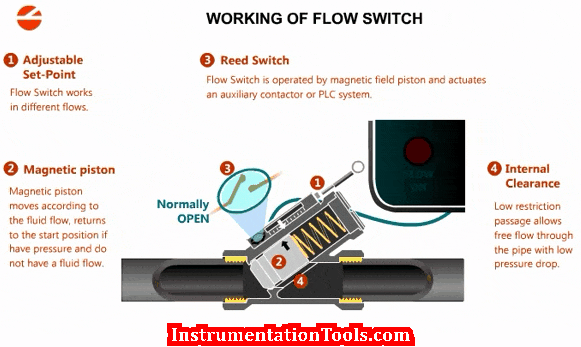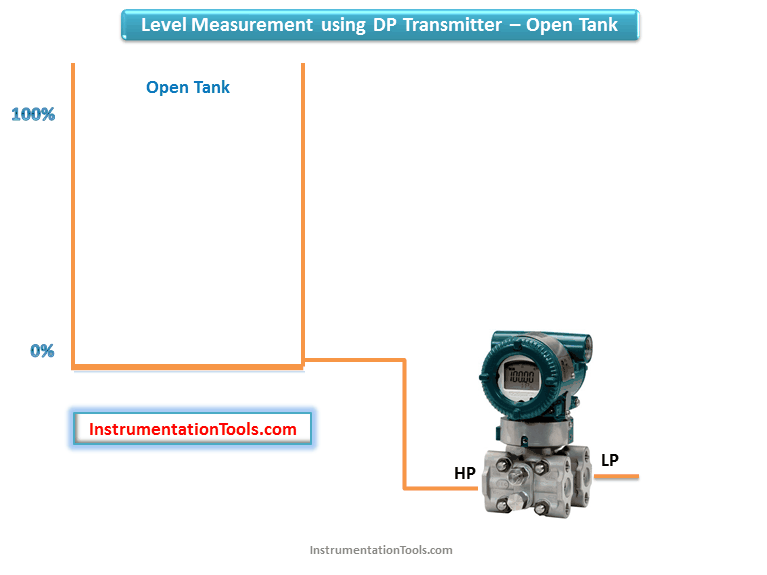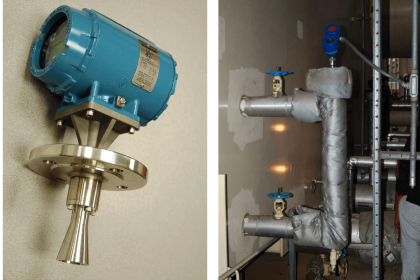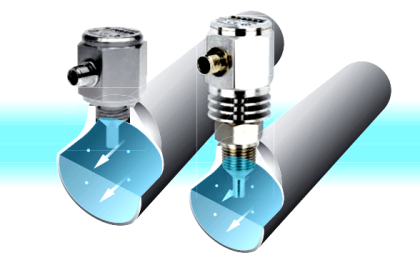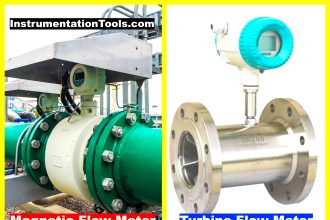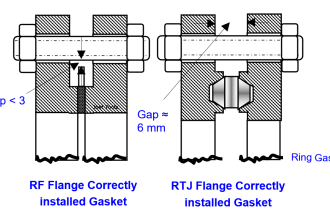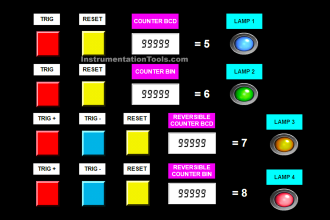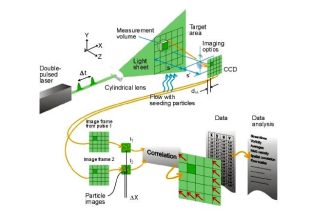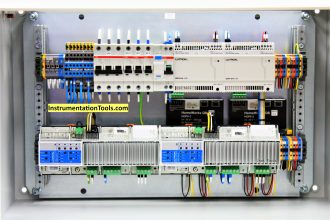A more primitive variation on the theme of a “tuning fork” level switch is the rotating paddle switch, used to detect the level of powder or granular solid material. This level switch uses an electric motor to slowly rotate a metal paddle inside the process vessel. If solid material rises to the level of the paddle, the material’s bulk will place a mechanical load on the paddle.
A torque-sensitive switch mechanically linked to the motor actuates when enough torsional effort is detected on the part of the motor. A great many level switches of this design sold in the United States under the trade-name Bindicator (so-called because they detected the level of solid material in storage bins).
Paddle Wheel Level Switch
A “Bindicator” style of level switch appears in this photograph (painted black, against a white painted hopper), used to detect the presence of soda ash powder in a hopper at a water treatment plant:
Articles You May Like :
Interposing Relay in a PLC System
Micro-impulse Level Transmitter
